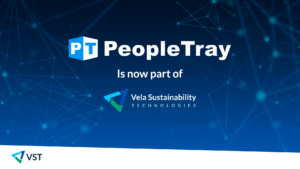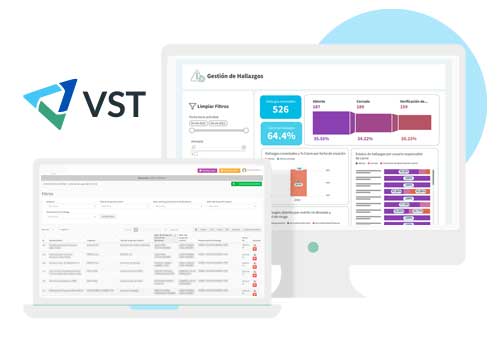
Vela Sustainability Technologies Welcomes PeopleTray to Its Portfolio
Vela Sustainability Technologies proudly announces the addition of PeopleTray to

SASB, or Sustainability Accounting Standards Board, focuses specifically on the financial materiality of sustainability issues.
When GRI and SASB collaborate on a company’s reporting process, they ensure that important sustainability information is effectively disclosed and communicated to stakeholders.
Key differences between GRI and SASB
GRI and SASB are both sustainability reporting systems, but there are key differences between them. GRI uses a more general approach and is based on principles and guidelines. SASB, on the other hand, uses a sectoral approach and is based on industry-specific standards.
GRI is open to any organization and industry while SASB only focuses on climate-intensive sectors. In addition, GRI offers voluntary public reporting and guidance, while the information presented in SASB is mandatory for listed companies. It is important to consider both systems when planning and implementing a successful sustainability strategy. The final choice depends on the organization’s industry and goals.
Which standard is best for your company?
When it comes to corporate sustainability, there are many metrics and standards to consider. GRI may be the best known, but SASB offers a unique focus on industries and their specific material issues. In the end, the best standard for you and your company depends on your priorities and values.
The GRI offers a comprehensive and standardized approach to sustainability reporting, while SASB allows for more specific disclosure and measurement in specific industries. Some indicators that illustrate the difference between the two approaches are greenhouse gas emissions, water use and human rights. The GRI takes into account social, environmental and economic factors when measuring sustainability, while SASB focuses specifically on environmental and economic factors.
At the end of the day, it’s a matter of choosing what suits you best and fits your company’s objectives. So, ask yourself: GRI or SASB? Or maybe both? The options are endless for creating a sustainability-conscious company.
How to implement a reporting standard in your company
When it comes to reporting to investors and other stakeholders on your performance as a company, is there anything you are more confident about than a standard? Whether it’s GRI or SASB, a standard provides a solid foundation for your reporting and the creation of measurable short- and long-term goals.
Plus, it’s a way to demonstrate corporate responsibility through compliance with global standards. But implementing a standard can be daunting if you don’t know where to start.
Our advice: start with the standard’s key questions and then work backwards to determine what data is needed to answer them.
All about reporting standards
In this article, we have compiled some of the most common questions about GRI and SASB indicators, and here are the answers to the most frequently asked questions.
What exactly do GRI and SASB mean? GRI stands for Global Reporting Initiative, while SASB stands for Sustainability Accounting Standards Board. Both organizations have established reporting guidelines and standards for companies to track and disclose information related to their social and environmental impact.
Why do these standards exist? As awareness of sustainability issues increases, stakeholders such as investors and consumers are demanding more transparency from companies. These reporting standards provide a standardized framework for companies to report on their positive and negative impacts, allowing for easy comparison between organizations.
Do all companies have to adhere to these standards?
No. Although the GRI has more than 1,000 companies worldwide, participation is voluntary. However, more and more companies are choosing to use the GRI or SASB guidelines to remain competitive and meet stakeholder expectations. So, whether voluntary or mandated by regulators or stock exchanges, adherence to reporting standards is increasingly important for companies seeking a sustainable future. Happy reporting!
Software for GRI and SASB reporting Vela Sustainability Technologies, a division of Vela Software encompasses solutions for the sustainability of companies. We have solutions designed to help organizations generate GRI and SASB reports, through a simple process, to create complete and accurate reports.
ESG reporting solutions can help organizations track their performance against industry-specific indicators as well as Global Reporting Initiative (GRI) and Sustainability Accounting Standards Board (SASB) standards. This helps organizations identify areas where they need to improve their sustainability performance and make more informed decisions about where to allocate their resources.
If you are interested in learning more about Vela Sustainability Technologies you can contact us through our contact form. We will be happy to answer any questions you may have.

Vela Sustainability Technologies proudly announces the addition of PeopleTray to

Preventing Critical Risks for Safer Operations In today’s corporate landscape,
